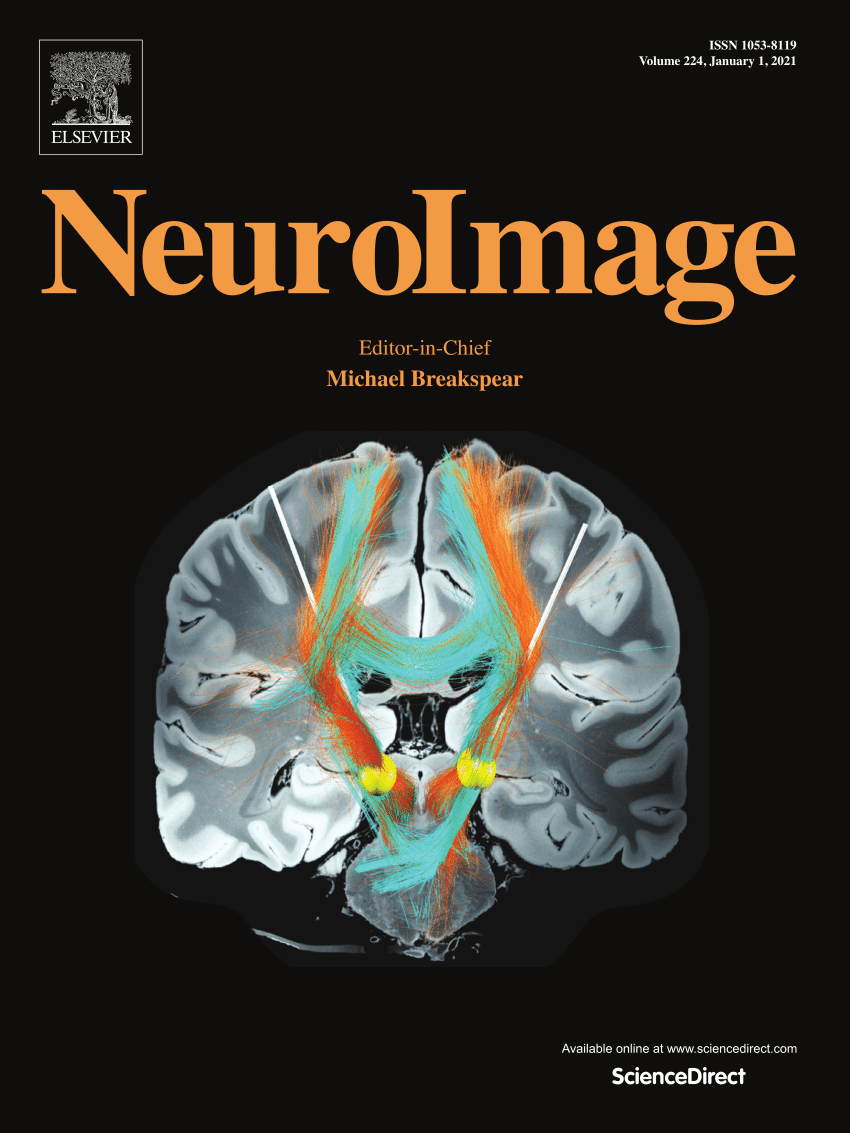Joint resting state and structural networks characterize pediatric bipolar patients compared to healthy controls: a multimodal fusion approach
IF 4.7
2区 医学
Q1 NEUROIMAGING
引用次数: 0
Abstract
Pediatric bipolar disorder (PBD) is a highly debilitating condition, characterized by alternating episodes of mania and depression, with intervening periods of remission. Limited information is available about the functional and structural abnormalities in PBD, particularly when comparing type I with type II subtypes. Resting-state brain activity and structural grey matter, assessed through MRI, may provide insight into the neurobiological biomarkers of this disorder. In this study, Resting state Regional Homogeneity (ReHo) and grey matter concentration (GMC) data of 58 PBD patients, and 21 healthy controls matched for age, gender, education and IQ, were analyzed in a data fusion unsupervised machine learning approach known as transposed Independent Vector Analysis. Two networks significantly differed between BPD and HC. The first network included fronto- medial regions, such as the medial and superior frontal gyrus, the cingulate, and displayed higher ReHo and GMC values in PBD compared to HC. The second network included temporo-posterior regions, as well as the insula, the caudate and the precuneus and displayed lower ReHo and GMC values in PBD compared to HC. Additionally, two networks differ between type-I vs type-II in PBD: an occipito-cerebellar network with increased ReHo and GMC in type-I compared to type-II, and a fronto-parietal network with decreased ReHo and GMC in type-I compared to type-II. Of note, the first network positively correlated with depression scores. These findings shed new light on the functional and structural abnormalities displayed by pediatric bipolar patients.
与健康对照相比,儿童双相患者的关节静息状态和结构网络特征:多模式融合方法
儿童双相情感障碍(PBD)是一种高度衰弱的疾病,其特征是躁狂症和抑郁症交替发作,中间有缓解期。关于PBD的功能和结构异常的信息有限,特别是在比较I型和II型亚型时。静息状态下的大脑活动和结构灰质,通过MRI评估,可能提供洞察这种疾病的神经生物学生物标志物。在这项研究中,58名PBD患者和21名年龄、性别、教育程度和智商相匹配的健康对照者的静息状态区域均匀性(ReHo)和灰质浓度(GMC)数据用数据融合无监督机器学习方法进行分析,称为转置独立向量分析。两个网络在BPD和HC之间存在显著差异。第一个网络包括额内侧区域,如额内侧回、额上回、扣带回,在PBD中显示出比HC更高的ReHo和GMC值。第二个神经网络包括颞后部区域,以及岛叶、尾状和楔前叶,与HC相比,PBD的ReHo和GMC值较低。此外,两种网络在1型和2型PBD中有所不同:1型与2型相比,枕-小脑网络的ReHo和GMC增加;1型与2型相比,额-顶叶网络的ReHo和GMC减少。值得注意的是,第一个网络与抑郁得分呈正相关。这些发现对儿童双相情感障碍患者的功能和结构异常有了新的认识。
本文章由计算机程序翻译,如有差异,请以英文原文为准。
求助全文
约1分钟内获得全文
求助全文
来源期刊

NeuroImage
医学-核医学
CiteScore
11.30
自引率
10.50%
发文量
809
审稿时长
63 days
期刊介绍:
NeuroImage, a Journal of Brain Function provides a vehicle for communicating important advances in acquiring, analyzing, and modelling neuroimaging data and in applying these techniques to the study of structure-function and brain-behavior relationships. Though the emphasis is on the macroscopic level of human brain organization, meso-and microscopic neuroimaging across all species will be considered if informative for understanding the aforementioned relationships.
 求助内容:
求助内容: 应助结果提醒方式:
应助结果提醒方式:


